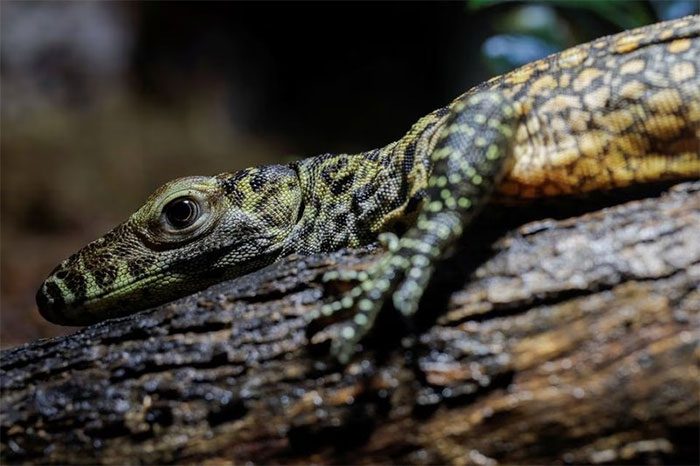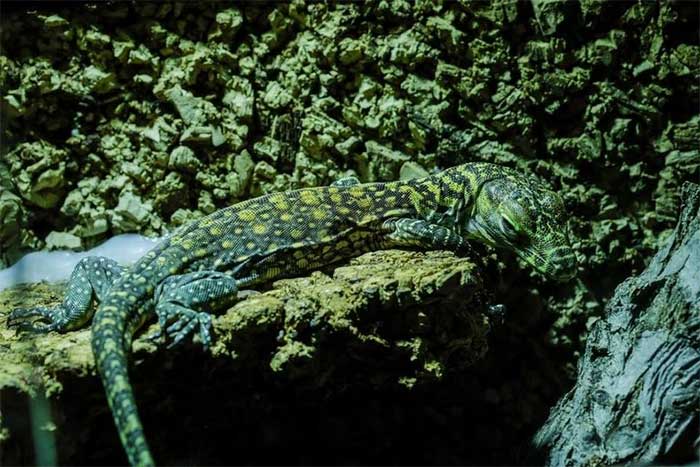This year, five baby Komodo dragons were born in a zoo in Spain, marking the first successful breeding of the world’s largest lizard, which is at risk of extinction, in this country in the past decade.

Embum, one of the five Komodo dragon hatchlings born at the Bioparc Fuengirola zoo in southern Spain. (Photo: Reuters).
In an interview with Reuters, Milagros Robledo, head of the herpetology department at the Bioparc Fuengirola zoo, expressed her joy, saying: “This is a wonderful achievement for all of us.”
The mother of these five dragons is named Ora, a 13-year-old female Komodo dragon. In August 2022, Ora laid a clutch of 12 eggs, five of which were selected for artificial incubation over a period of seven months.
“It was a wonderful task, albeit tedious and time-consuming, but it brought us immense satisfaction,” Robledo said, adding that the newly hatched young represent “a hopeful future” for the species.

Juanito, one of the five Komodo dragon hatchlings born at the Bioparc Fuengirola zoo in southern Spain. (Photo: Reuters).
Although at birth, a Komodo dragon weighs less than a lemon and is shorter than a shoebox, this small reptile can eventually grow to nearly 3 meters in length and weigh up to 70 kg, sporting sharp teeth and a venomous bite.
In 2021, this lizard species, native to four islands in Indonesia, was listed in the “Red List” by the International Union for Conservation of Nature (IUCN), as only about 1,500 individuals remain in habitats threatened by climate change.
Robledo noted that in the wild, newborn Komodo dragons tend to move up into the trees and do not require care from their mother or father. However, in captivity, the hatchlings are placed in separate shallow ponds so that veterinary staff can monitor their development.


















































